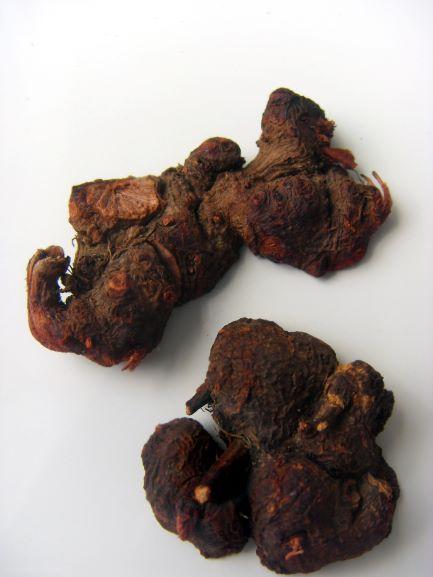Rhizoma Fagopyri Cymosi
- Name
- Origin
- Where Does It Grow?
- Nature and Flavor
- Identified Active Components / Major Chemical Constituents
- Drug Actions in TCM
- Traditional Uses in TCM
- Pharmacological Actions
- Toxicology
- Administration and Dosage
- Adverse Effect, Side Effects and Cautions
- References
Name
Latin Name: Rhizoma Fagopyri Cymosi
Common Name: Wild buckwheat rhizome
Scientific Name: Fagopyrum dibotrys (D.Don) Hara
Chinese Name: 金蕎麥
Pinyin Name: jin qiao mai
Origin
The root or tuber of Fagopyrum dibotrys (D.Don) Hara, a perennial herbal plant of the Polygonaceae family.1
Where Does It Grow?
It is mainly produced in Jiangsu and Zhejiang provinces, wild or cultivated. 1
Nature and Flavor
Wild buckwheat rhizome is astringent and slightly pungent in flavor, cool in nature and mainly manifests its therapeutic actions in the lung meridian.1
Identified Active Components / Major Chemical Constituents

Drug Actions in TCM
Wild buckwheat rhizome clears heat, eliminates toxic substance, promotes lung functioning and expectoration, aids pus drainage, relieves swelling, and dispels wind-dampness.1Traditional Uses in TCM
- Wild buckwheat rhizome promotes the healing of lung abscess and dissolves sputum to facilitate expectoration. It can be used alone, or combined with herbs like heartleaf houttuymia herb, honeysuckle flower and reed stem.
- Wild buckwheat rhizome clears heat, and promotes lung functioning, which help relieve cough and soothe throat. It usually works with heartleaf houttuymia herb and blackberrykiky rhizome for this purpose.
- In TCM, a sluggish movement in the limbs or joints are usually due to wind-dampness accumulation, wild buckwheat rhizome can work with mulberry twig, star jasmine vine and atractylodes rhizome for treatment.
- For skin sores, wild buckwheat rhizome can combine with appropriate herbs to clear heat and eliminate the toxic reactions.
Pharmacological Actions
Toxicology
Administration and Dosage
For decoction, wild buckwheat rhizome is suggested 15~30g each time. For topical application, the herb is ground and mixed with water or vinegar, and then paste on the lesion.1
Adverse Effect, Side Effects and Cautions
References
- http://www.zysj.com.cn/zhongyaocai/yaocai_j/jinqiaomai.html
- Lui Daiquan (editor-in-chief), Chinese Herbal Medicine, Shanghai Scientific and Technical Publishers, 2000-6.


